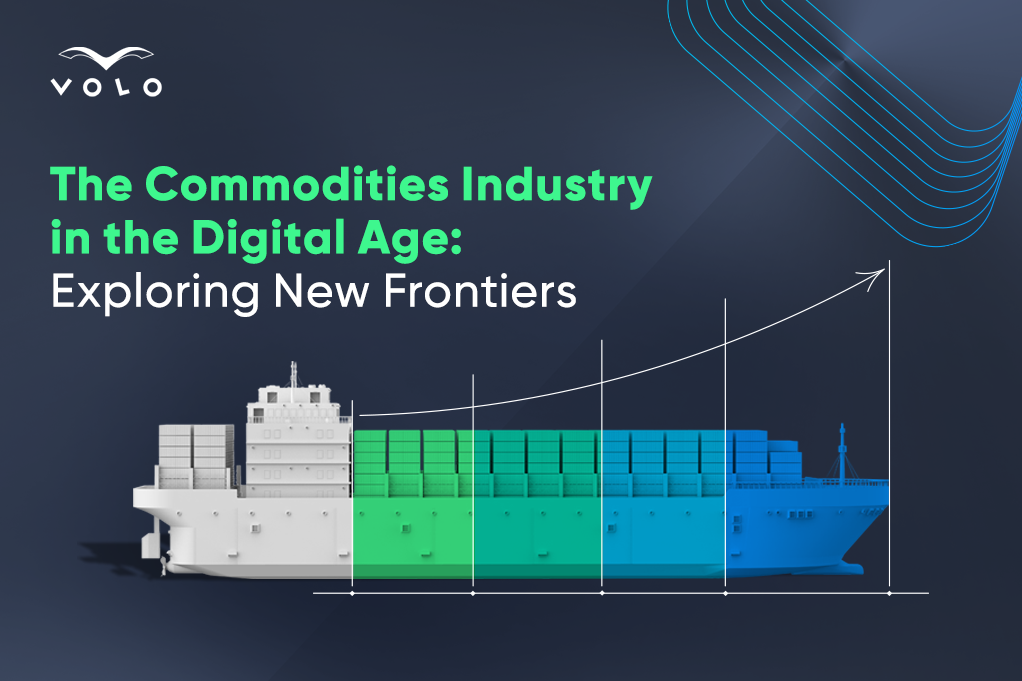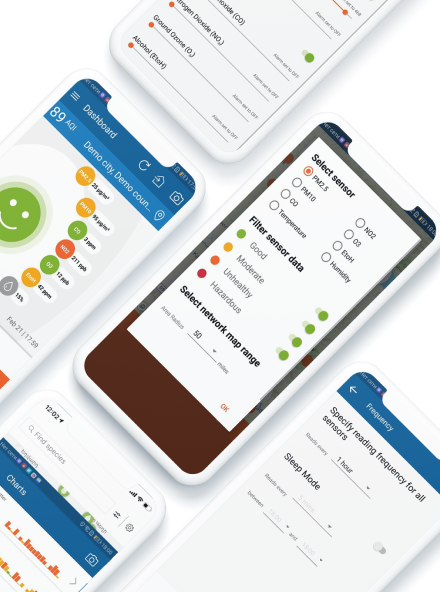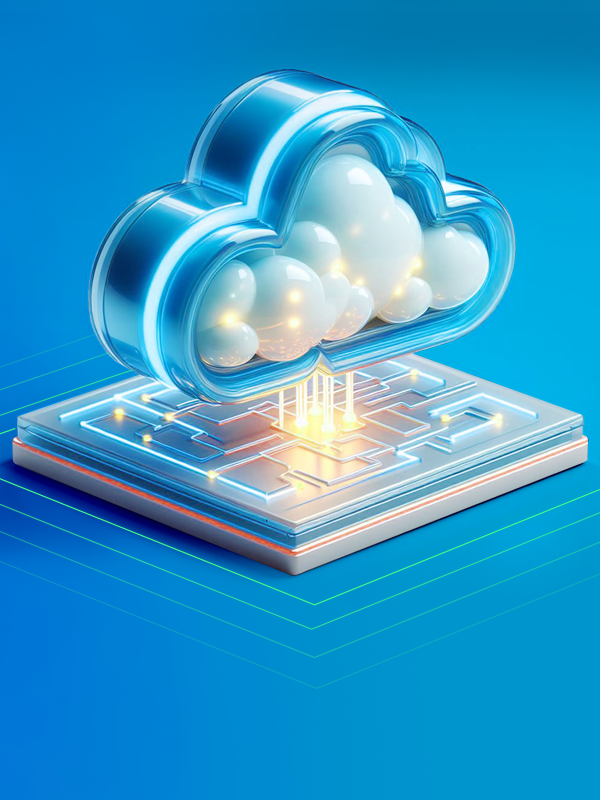
Commodity Trading Solutions in the Digital Age: Exploring New Frontiers
8 Nov 2024

With the rapid development of the IT sector, the commodities industry is witnessing a remarkable shift by embracing the benefits of digital transformation. The latter in combination with the conservative commodities trade are paving the way for a future where efficiency, sustainability, and market dynamics are redefined.
It’s no news that the commodities firms, more often than not, are stuck in centuries-old practices and look down upon the importance of technological innovation. However, as is the case with any other walk of life, the digital advancements did not leave the commodities sector intact either. Many large and small commodity trading companies are already implementing digital tools in their day-to-day activities and reaping all the benefits that come with digital transformation. Slowly, yet steadily, the rest of the commodities sector will follow suit.
Meanwhile, let’s explore the profound impact of digital transformation on the commodities industry via looking at some important statistical data that precisely depicts the current relationship formed as a result of the convergence of the old and the new.
The Four Stages of Digitization for the Commodities Firms
Before we delve into the commodities statistics and facts, it’s good to first have a look at the ways the commodities companies employ various digital strategies into their work routine. The classification below, introduced by Boston Consulting Group, displays the stages that commodity traders go through as they incorporate digitization into their business practices.
1. Electronic Platforms and Straight-Through Processing
- Implementation of electronic platforms instead of bilateral agreements created by traders
- Electronic clearing of OTC trades
- Complete application of straight-through processing
2. Automation Based on Parametric Algorithms
- Use of parametric or human-crafted algorithms for task automation (e.g., asset optimization, trade execution, and delta hedging)
- Suitable for front, middle, and back offices
3. Data-Driven Assistance
- Deployment of a layer of algorithms to gather and analyze data feeds
- Implementation of algorithms’ outputs to plan a trading strategy
- Use of AI tools to carry out complex and time-consuming tasks
4. Full Automation
- Full digitization of the value chain, including data collection, preprocessing, analysis, and interpretation, portfolio optimization, and trade execution
- High-frequency trading strategies
Digital Transformation Across Different Sectors of the Commodities Industry
Did you know that by 2030, digital technologies have the power to help resource-intensive industries to reduce their global carbon footprint by 20%?
Whether your firm deals with fuels, metals, or agriculture - commodity trading solutions have the power to improve your internal and external business processes, recover slow-functioning or outdated software projects, and even, boost your reputation.
For example, many people hold a negative perception on the mining industry but with the help of digital technologies, you will be able to reduce your carbon footprint, thus breaking the stereotypes and debunking the myths surrounding the mining sector. This will in turn enhance your standing and your image in the public eye.
Let’s now have a look at some interesting facts that prove the invaluable input of digital tools in the commodities industry.
Fuels: The Impact of Digitization on Energy Companies
We went through the different areas of technology advancements and digital tools, from AI and IoT to blockchain and cloud computing, to see how they impact the energy sector. Here is what we found:
- AI and machine learning tools can help energy companies cut costs, optimize operations, and boost efficiency.
- AI and ML solutions can also optimize renewable energy generation and distribution, thus reducing waste and increasing output.
- AI and ML technologies help with oil and gas explorations, as well. They can analyze seismic data and forecast the sites where fossil fuels can be found.
- AI and ML tools can boost efficiency in the energy sector by up to 20%, while reducing energy consumption by about 10%.
- Blockchain offers a safe system for recording and tracking energy transactions.
- IoT devices can help monitor energy transition, track equipment performance, and improve demand response in electricity generation.
- IoT devices can help improve the drilling management processes and boost health and safety in offshore oil and gas production.
- Through IoT sensors, companies can track the temperature and humidity of buildings and adjust the heating and cooling systems accordingly, thus reducing energy waste.
- Cloud computing helps energy firms process large amounts of data efficiently and make better informed decisions.
- Cloud computing in the energy sector is expected to surpass $15.2 billion in 2025.
Digital Transformation Forging the Metals and Mining Industry
Not sure how digitization can help your mining efforts? Here is a list of facts and statistics to help you navigate the digitization waters. Find out about the types of digital tools that are currently used in the mining sector as well as look at some facts that once again prove the importance of employing tech advancements in the commodities companies.
- The metals and mining industry is 30-40% less digitally mature than comparable industries (fuels, agriculture, etc.).
- Sensors, robots, and 3D printing solutions can be used in mining to automate and optimize manual and risky activities.
- AR and VR can enable field, remote and centralized workers to perform better.
- The integration of advanced analytics, simulation modeling, and AI can help process and analyze data from sources within and beyond the value chain to provide real-time decision support and more accurate predictions for the future.
- Autonomous trucks improve employee safety and reduce fuel usage by 10-15%, making sites less hazardous.
- AI-powered robotic devices can perform various mining operations, ore sampling, and even rescuing trapped miners.
- By 2035, mineral raw materials producers will save from $290 billion to $390 billion annually through AI and data analysis.
- Over 30% of mining executives consider the lack of a digitalization strategy and needed skills as the major obstacles towards digital transformation.
Tech Innovations Cultivating Change in Agriculture Companies
Digitization did not pass by agricultural companies either. Here is how robotics, IoT, big data analysis, and other software tools are helping businesses in the agriculture sector improve their processes, increase crop yields, decrease the need for human labor, and boost the overall work efficiency for everyone involved in the process.
- Robotics in farming has a global market value of around $14.74 billion as of 2024 and is expected to grow at a CAGR of 23% from 2025 to 2030.
- With their $16.18 billion market value in agriculture, IoT devices are drastically transforming this sector.
- Through IoT devices farmers are able to track produce and live animals, detect health issues and assess the environment inside the farm, or the uptake of moisture from the soil in real time.
- Drones will go where humans can’t, providing deeper insights into pest protection, fertilizer and herbicide application, irrigation and harvest timing.
- The systematization and analysis of big data can turn into useful insights that will help improve irrigation systems or handle unpredictable weather.
- Digitalization can help farmers optimize their documentation on food production. Through relevant software tools, they can fill out the required forms on their smartphones, adding photos/videos, and even leaving a signature.
- Through the use of digital technologies, farmers can lay out a field more effectively, with the help of GPS and advanced insights, thus finishing the work faster as well as reducing the costs.
Parting Thoughts
Now that you learnt about the crucial importance of commodity trading solutions, you might be contemplating the initial steps to embark on your own digital transformation journey. The beginning might seem difficult, confusing, and at times, overwhelming, especially if you are a newbie in the tech world.
However, a slightly deeper look into things, will make things clearer. There are two main paths that you can take:
- Software Development Outsourcing: You hire an offshore company to handle the digital needs of your commodities firm.
- In-House Software Development: You hire an in-house tech team that will always be at your disposal to take up on your software development projects.
The choice between the two comes down to your needs, personal preferences, your project specifications, project length, complexity, and your future plans regarding digitization. Closely explore the pros and cons of both these strategies and choose the one that fits your business needs the best. Don’t rush into things.
If you find yourself in a situation where making the final decision feels almost impossible, feel free to drop us a line, and our team will look into your case and help you make the right choice. If our experts see that your project is better done in house, then rest assured that you will be informed about it right away. We value our and our clients’ time and prioritize trust and honesty in everything we do.
More helpful resources:
- Outsourcing vs In-House Software Development for Companies in the Commodities Industry
- TradeCloud: Blockchain-Enabled Commodities Trading Innovation
- Project Recovery in Commodity Trading



